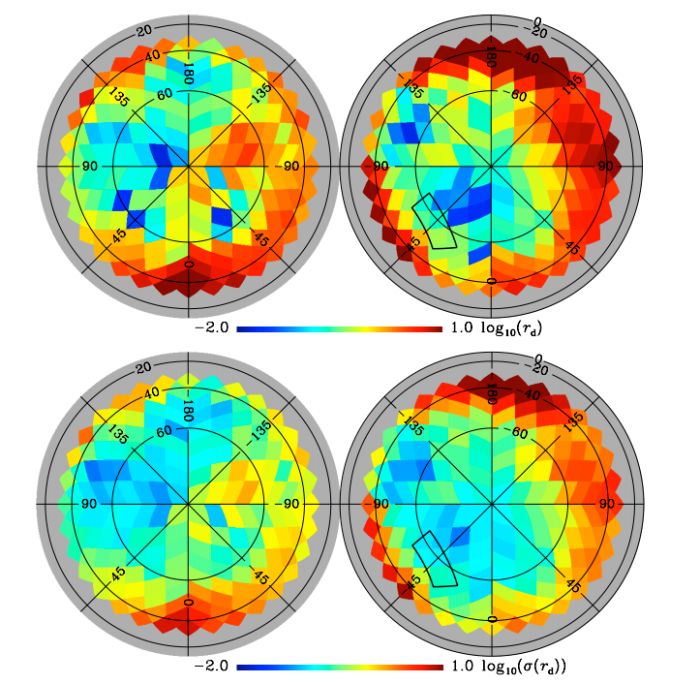Update: There Is No Proof for the Existence of Gravity Waves After All?
It was mid-March this year when it was reported that gravity waves were detected by a telescope at the South Pole called BICEP2. The detection of these waves was said to be a breakthrough in proving the origin of the universe. It was considered as a direct evidence on the so called cosmic inflation of the universe. However, the supposed breakthrough discovery of primordial gravity waves is now being contested or has become dubitable with the release of satellite maps of cosmic dust.
Dusts of Doubts
The European Space Agency’s Planck Satellite mission, in collaboration with the BICEP2 team responsible for supposedly discovering the traces of gravity waves, released a sky map of galactic dust that may have been contributed to occurrence of what was recorded as gravity waves. The gravity waves reported earlier may have just been an illusion. Hot galactic dusts that emit microwaves may have misled the BICEP2 team.
Physicist Neil Turok of the Perimeter Institute for Theoretical Physics used to criticize the supposed detection of the gravity wave before. Now, he is reiterating his argument saying that “the evidence for these gravitational waves is shrinking, going away, vanishing.” He adds that “the BICEP2 team is hoping for some evidence for gravitational waves to remain” but for him, it’s all just “wishful thinking.”
The BICEP2 team that reported the gravity wave defended their position about the “breakthrough” discovery by saying that the area they studied from Antarctica was likely a low-dust environment. They fended off contentions against their gravity wave discovery by claiming that interferences were unlikely to have clouded their observations. However, the released Planck maps back the argument that that galactic dust is everywhere, including the region where the gravity wave was supposedly seen. To be published in the journal Astronomy & Astrophysics, Planck’s maps are deemed to “show that even in the faintest dust-emitting regions there are no ‘clean windows’ in the sky.”
BICEP2 Used the Wrong Dust Data?
The BICEP2 team were of course aware of the possibility of interstellar dusts or clouds skewing the data they obtained as they made their conclusion about the existence of gravity waves. However, instead of using the Planck mission’s raw data in estimating interstellar or cosmic dusts, they settled with data available on a PowerPoint presentation prepared by members of the Planck mission.
The Planck team did its own analysis of dust present in every direction, including the area the BICEP team studied. They had to eliminate confounding signals to come up with a more reliable analysis. They detected carbon monoxide emissions, which are comparable to those of cosmic dust’s, and created a map of monoxide signals to be later subtracted from the data from the observatory.
Having taken everything into account, the Planck team could only conclude that dust is everywhere. The authors write: “We show that even in the faintest dust-emitting regions there are no ‘clean’ windows in the sky.” This means that the region studied by BICEP was mired by dust particles that could have produced emissions that contributed to the conclusion that gravity waves were present.
No Proof of Gravity Waves?
Planck mission researchers, however, did not categorically dismiss the results of the BICEP study. While they are casting doubts over the gravity wave detection claim, they are not saying that indeed there is no proof of gravity waves or that gravity waves don’t exist. Instead, they are conveying the message that it’s time to veer away from competition (BICEP and ESA’s Planck teams are in competition) and move into collaboration mode. It’s important to reconcile the data obtained by both camps for the sake of science.
Competition among research groups is nothing new. It exists everywhere in the scientific field especially when battling for further funding is involved. This inconsistency in the gravity wave conclusion and interstellar dust data show how it is very important for scientists to cooperate instead of competing for acknowledgement and achievement. Hopefully, things can be sorted out soon as the gravity wave quandary does not really benefit anyone other than egotistic scientists who just want to be acknowledged for their unilateral assertions.

![By NASA/JPL-Caltech/ESA [Public domain], via Wikimedia Commons](https://techtheday.com/wp-content/uploads/2014/09/Planck-mission-data.jpg)
![By Cal Tech [Public domain], via Wikimedia Commons](https://techtheday.com/wp-content/uploads/2014/09/gravitational-waves.jpg)